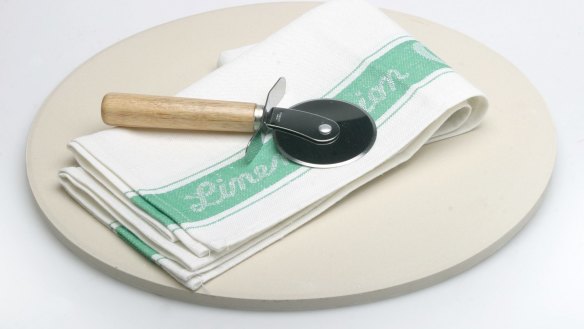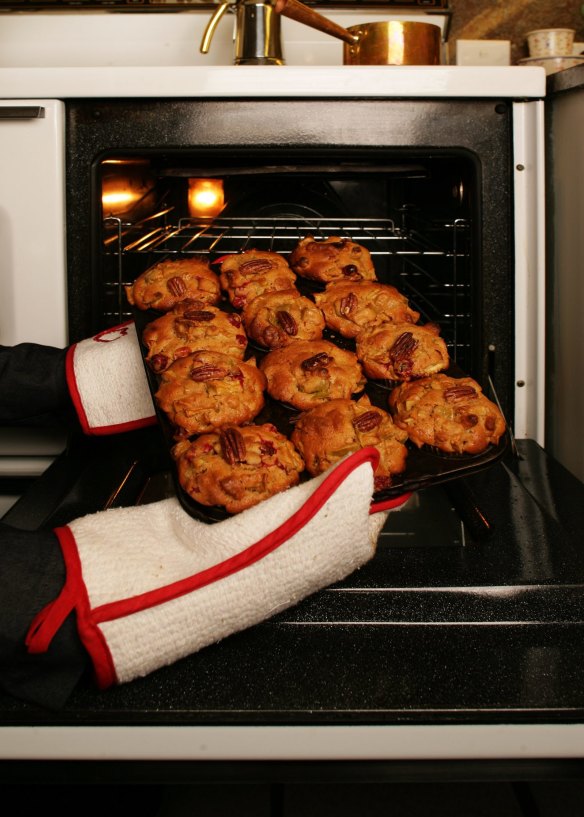How to get the most out of your oven

Don't despair if you've had some baking fails, burnt roasts and are yet to find the 'hot spot'. The secret to getting the most out of your oven is to become better acquainted with your appliance. Here are three easy and practical tips every home cook should know.
Clean like a pro
Oven cleaning is a necessary evil, and one you probably keep pushing down your 'to-do' list, but if you want to enjoy your cooking experience and better food, do it.

TV chef and food author Ed Halmagyi aka Fast Ed says keeping your oven clean matters for many reasons, "but none is more important than what it says about your feelings towards your kitchen.". "Whether rustic or modern, charmingly-derelict or Scandi-refined, every kitchen is beautiful. A dirty oven is a pox on the place."
Halmagyi says oven mess makes little difference to accurate cooking, but it can affect the aroma of your meals. Who wants to spend hours preparing a succulent roast only to serve it up smelling like old charcoal?
"Ovens really work by using thermal mass and convection, not radiated or reflected heat," he explains. "However, none of that changes the simple and unavoidable fact that dirty ovens are an unnecessary blight. My big peeve about oven filth is the odour, and this will affect your food. Burnt and charred scraps make for less pleasant baking."
Halmagyi has a few ovens in his home – each with different self-cleaning functions. "One oven I have in our home kitchen is a great SMEG unit that has a pyrolytic function for self-cleaning," Halmagyi says.
Pyrolytic cleaning is a clever technology that locks the oven door, then heats up to around 500 degrees, carbonising food residue and grease to ash. When the cycle is finished, residue can be wiped away with a spray of water and detergent.
"That works well enough, but you still need to clean the racks and bars," he says. "Remember, you can't pyro those! For those parts - and to really get the glass super-clean - I go nuclear! Easy-Off oven cleaner is the best product – retail or commercial – I have ever used for powerful cleaning. I also use it for burnt saucepans, frying pans, all kinds of stuff. Just don't use it on aluminium as it reacts and darkens the metal."
Most modern ovens have self-cleaning technology, so check your oven's functions. You simply set it to self-clean, come back a few hours later and voila, the job is done.
Vapour cleaning is another technology. It generates heat and steam to soften grease, which can easily be wiped away.
For a lazy everyday option, check out Ever Clean enamel – a durable and glossy finish that's easy to wipe down after cooking.
Get to know your oven's temperature
Every cook has experienced this. You follow the cooking instructions to the 't', set the oven to whatever the recipe advises, and your food comes out overcooked on one side and undercooked on another, or worse, completely undercooked! What's the deal?
Well, it could be that your oven is not heating to the temperature it says it is or you have hot and cold spots in your oven. According to Halmagyi: "not only does temperature matter, but ovens with different functions will have different ambient heats on each [setting]."
To test if your oven is accurately heating to temperature, use an oven thermometer.
"Oven thermometers are available all over the place – online, kitchenware stores, even some supermarkets," Halmagyi says. "The trouble is, they're usually made with exactly the same technology as the one in your oven. I reckon an oven-probe thermometer with a cord is your best bet.
"But the bigger problem (you get used to your oven after using it a while), is that most ovens have hot and cold spots. The only way to get to master your oven – and the hot and cold spots – is to do a bunch of baking and test it."
An easy test is to pop some white bread sliced on different racks and sides of the oven and heat the oven. Check 10 minutes later. The bread that's darker indicates hot spots and the bread that's lighter indicates cold spots.
Identify your oven's superpowers
New whizz-bang smart ovens can be programmed for just about every culinary creation, from pastries and soufflés to casseroles and wood-fired doughs. You can create delicious focaccia, pizza and bread without the flight expense to Italy. Others can spit roast meat on a rotisserie. So if you're up for a little MasterChef experience at home, it pays to get to know your oven's functions.
Halmagyi has sliced up a few gourmet "wood-fired" pizzas in his time from his home kitchen.
"The pizza function in my SMEG is pretty good, and a rotisserie is great," he says. "But really, I'm a bit old-fashioned. Gadgets aren't my thing.
"I reckon if you want to get more out of your oven you should be talking about trying new recipes, not new toys. Invest in a really good heavy earthenware or enamelled cast iron dish and start baking your stews, not cooking them on the stove.
"I pretty much always leave a pizza stone in the oven on the bottom shelf. It retains heat, which means my oven loses less heat when I open the door. This helps with all kinds of recipes."
If you are keen to max your oven's full potential, attempt a few simple recipes first.
"Try a simple quick-bread," Halmagyi suggests. "Or slowly dry meringue overnight on the lowest setting."
The best recipes from Australia's leading chefs straight to your inbox.
Sign up